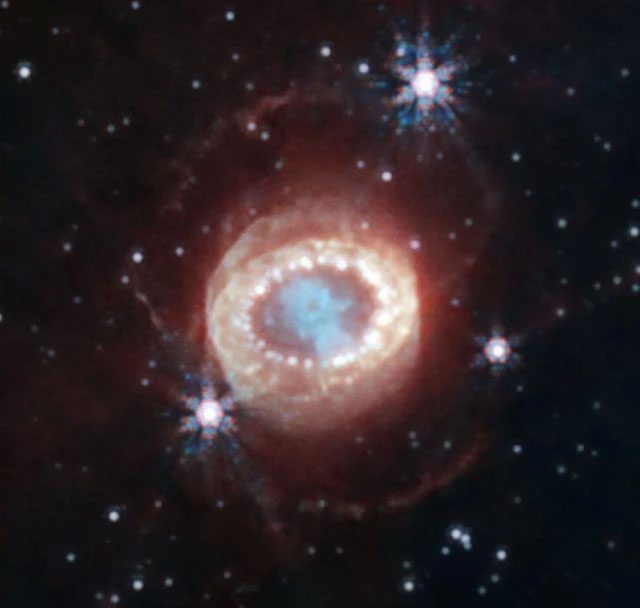Amidst the brightest supernova visible from Earth in the past 400 years, a mysterious, ghostly object with super energy has just “manifested.”
According to Space.com, the powerful James Webb Space Telescope has unveiled a new secret from Supernova 1987A – a brilliant object that is the “remnants” of a stellar explosion, which rained down “ghostly particles” known as neutrinos on Earth in 1987.
In the midst of that chaos, a neutron star has just appeared.

Image captured by James Webb showing a neutron star emerging from the brightest supernova in Earth’s sky in the last 400 years – (Photo: NASA/ESA/CSA).
A neutron star is one of the most extreme objects in the universe, possessing a magnetic field that is thousands to millions of times stronger than that of Earth. They are the “zombies” of massive stars.
Thus, James Webb’s new discovery has provided a direct image of how a “zombie” comes into existence.
Supernova 1987A was once a massive star when it was still “alive.” When it exhausted its energy, the star approached its death by exploding into a supernova, with its core collapsing.
At that moment, the tremendous energy from the star’s core tore apart the outer layers, blowing them away. This process enriches the universe chemically as the cores of stars are where heavy elements are forged.
Additionally, it supplies essential core elements for planets such as carbon, oxygen, silicon, iron, and more.
Simultaneously, a small portion of the star will collapse after the explosion, forming a “zombie” that is small yet rich in energy.
The largest stars in the universe will create neutron stars. Meanwhile, stars that are only “slightly larger” than our Sun or smaller will produce white dwarf stars.
Thus, the neutron star that James Webb has just captured had been hiding for 37 years since the stellar explosion.
According to astronomer Mike Barlow from University College London (UCL) – a member of the research team, the MIRI and NIRSpec spectrometers of James Webb detected strong ionized argon and sulfur emission lines from the very core of the nebula surrounding supernova 1987A.
This serves as direct evidence of the source of ionizing radiation at the center. The data can only correspond to one thing: Neutron Star.
This discovery has just been published by the multinational research team in the scientific journal Science.


















































